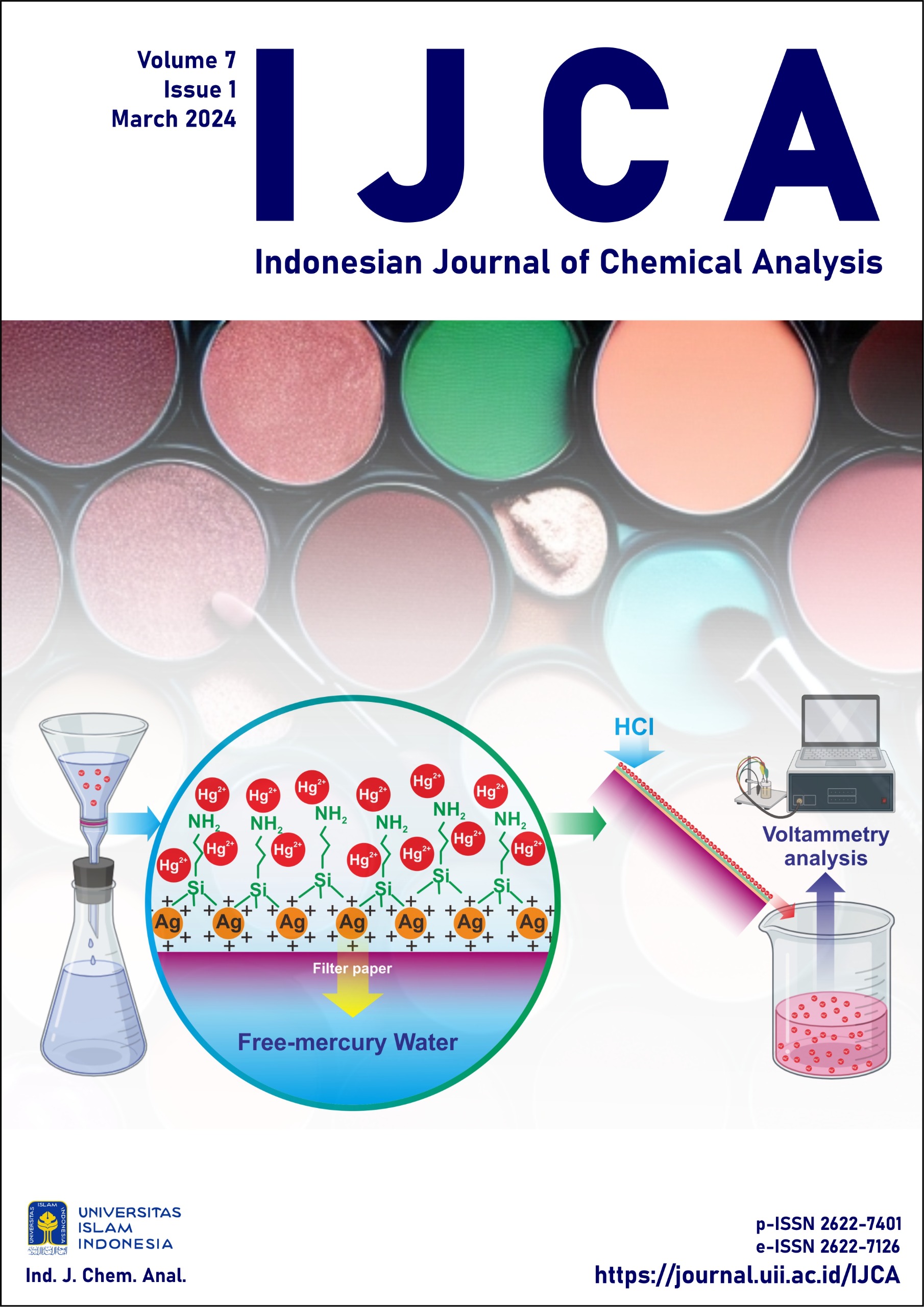Main Article Content
Abstract
Validation of the method for determining ethanol in vinegar and beverages has been carried out in the linearity range of 0.05-1% using GC-FID. This research was carried out using an internal standard solution and without an internal standard solution. The research aims to validate the linearity of ethanol determination at low concentration levels. This validation is useful to ensure that the ethanol test method in the sample can be detected at low concentration levels. In the halal authentication process, the maximum limit for ethanol content is 5%. The method validation results confirm that in the concentration range 0.05-1% it has good linearity with a correlation coefficient (R) without the addition of internal standards and with the addition of standard solutions being 0.9972 (R2=0.9943) and 0.9952 (R2=0.9905). The results of the analysis of variance (ANOVA) test with a 95% confidence interval and 9 degrees of freedom F-count (0.0141) < F-critical (0.3146) show that the range 0.05-1% corresponds to the limit of linearity. The results of the ANOVA test with a 95% confidence interval with df=6 show the F-test value (0.0879) < F-critical (0.2334) indicating that the two proposed methods have high precision and no significant differences. Both methods also have high accuracy and no significant differences in accuracy as shown by the results of the ANOVA test with a 95% confidence interval and degrees of freedom = 6 showing the F-test value (1.5204) < F-critical (4.2839). It is recommended that the results of this validation be useful in the halal verification process for vinegar and beverage products.
Keywords
Article Details
Copyright (c) 2024 Yuli Rohyami, Aprisilia, Yorfan

This work is licensed under a Creative Commons Attribution-ShareAlike 4.0 International License.
You are free to:
Share — copy and redistribute the material in any medium or format
Adapt — remix, transform, and build upon the material for any purpose, even commercially
Under the following terms:
Attribution — You must give appropriate credit, provide a link to the license, and indicate if changes were made. You may do so in any reasonable manner, but not in any way that suggests the licensor endorses you or your use.
ShareAlike — If you remix, transform, or build upon the material, you must distribute your contributions under the same license as the original
No additional restrictions — You may not apply legal terms or technological measures that legally restrict others from doing anything the license permits




